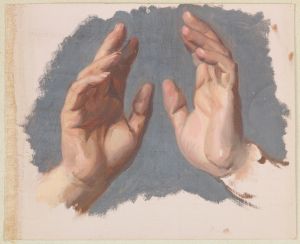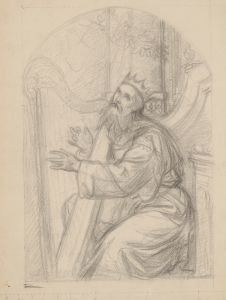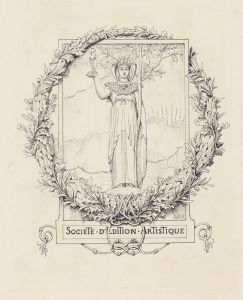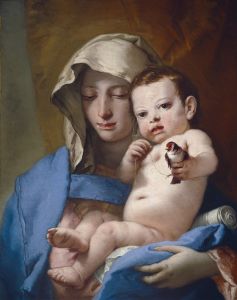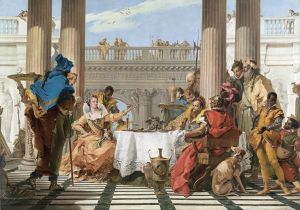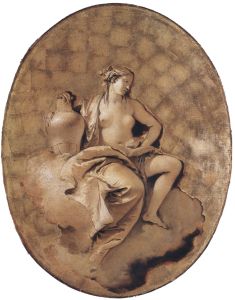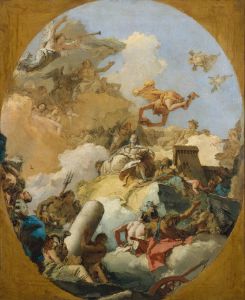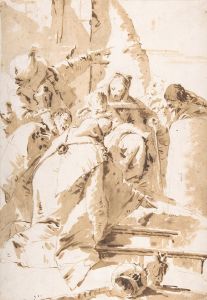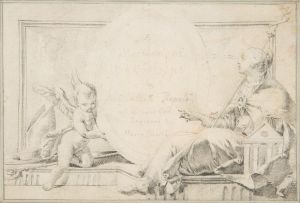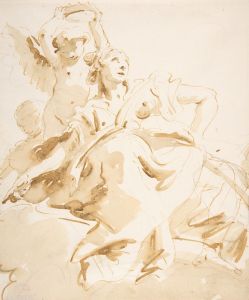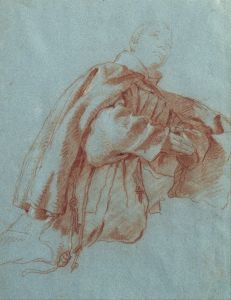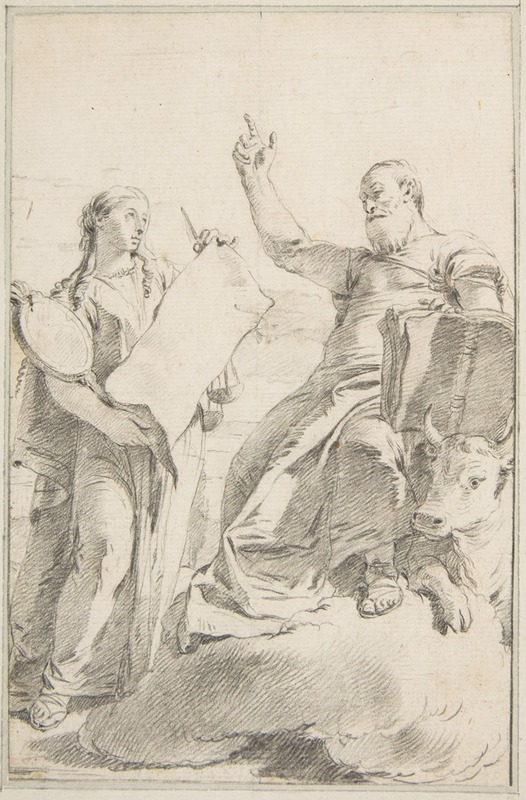
Saint Luke with a Female Allegorical Figure
A hand-painted replica of Giovanni Battista Tiepolo’s masterpiece Saint Luke with a Female Allegorical Figure, meticulously crafted by professional artists to capture the true essence of the original. Each piece is created with museum-quality canvas and rare mineral pigments, carefully painted by experienced artists with delicate brushstrokes and rich, layered colors to perfectly recreate the texture of the original artwork. Unlike machine-printed reproductions, this hand-painted version brings the painting to life, infused with the artist’s emotions and skill in every stroke. Whether for personal collection or home decoration, it instantly elevates the artistic atmosphere of any space.
Giovanni Battista Tiepolo, an Italian painter and printmaker of the 18th century, is renowned for his grandiose and imaginative frescoes and paintings. One of his notable works is "Saint Luke with a Female Allegorical Figure," which exemplifies his mastery in combining religious themes with allegorical elements. Tiepolo was a leading figure in the Rococo movement, known for its ornate and decorative style, which is evident in this painting.
"Saint Luke with a Female Allegorical Figure" is a fine example of Tiepolo's ability to blend religious iconography with allegorical representation. Saint Luke, one of the four Evangelists, is traditionally depicted as a painter, often shown with a palette and brushes, symbolizing his role as the patron saint of artists. In this painting, Tiepolo captures Saint Luke in a moment of divine inspiration, possibly receiving guidance from the allegorical figure beside him.
The female allegorical figure in the painting is a common motif in Tiepolo's work, where he often used such figures to convey abstract concepts or virtues. While the exact identity or symbolism of the female figure in this painting is not explicitly documented, she could represent inspiration, wisdom, or another virtue associated with the creative process. Tiepolo's use of allegory allows viewers to interpret the painting on multiple levels, engaging with both the religious and philosophical themes.
Tiepolo's style is characterized by his use of light, color, and dynamic composition. In "Saint Luke with a Female Allegorical Figure," he employs a vibrant palette and dramatic contrasts of light and shadow to create a sense of movement and depth. The figures are rendered with fluid, graceful lines, and their expressions convey a sense of serenity and contemplation. This dynamic composition draws the viewer's eye across the canvas, inviting them to explore the interaction between the figures and the symbolic elements present.
The painting reflects Tiepolo's skill in fresco painting, a technique he mastered and used extensively in his career. Although "Saint Luke with a Female Allegorical Figure" is not a fresco, it shares the same sense of grandeur and spatial illusion that Tiepolo achieved in his large-scale works. His ability to create a sense of three-dimensionality on a flat surface is evident in the way the figures seem to emerge from the background, engaging directly with the viewer.
Tiepolo's work was highly sought after during his lifetime, and he received numerous commissions from churches, palaces, and private patrons across Europe. His influence extended beyond Italy, as he worked in countries such as Germany and Spain, leaving a lasting impact on the development of European art. "Saint Luke with a Female Allegorical Figure" is a testament to his artistic legacy, showcasing his ability to blend religious themes with allegorical and decorative elements in a manner that continues to captivate audiences today.
In summary, "Saint Luke with a Female Allegorical Figure" by Giovanni Battista Tiepolo is a remarkable example of 18th-century Rococo art. Through his masterful use of composition, color, and allegory, Tiepolo creates a work that is both visually stunning and rich in symbolic meaning. The painting not only highlights Tiepolo's technical skill but also his ability to convey complex themes through the interplay of religious and allegorical imagery.





